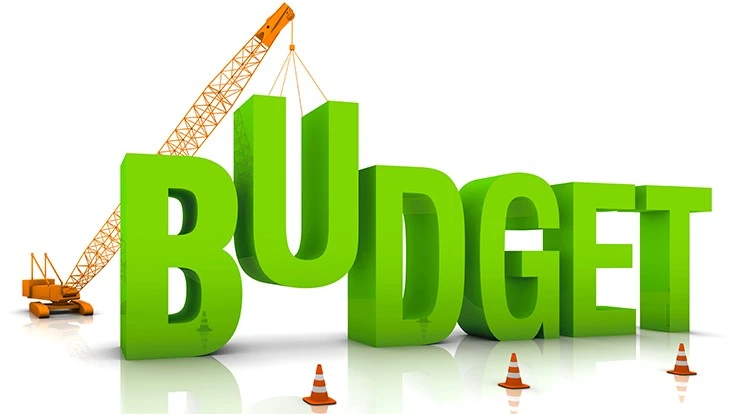
It is that time of the year for many golf courses to finish their fiscal year and develop a budget for their department for the year ahead. Here are a few tips to consider when going through the budget process.
RECORDS & NOTES
If you kept good records and notes in the prior year or years it will be invaluable in establishing your agronomic plan for the year ahead. If you did not keep good records, then make it a priority next year. It is suggested that you not only list the products that you used but also the rate, the total amount of product and the cost. If the product worked well then note that or if it was not effective. Make notes as to suggested rate or product changes for the year ahead. A variety of software programs are available to assist you with this or you can use a simple Excel spreadsheet.
PARTNERS
Don’t feel like you are on an island when developing your agronomic plan. It is likely that there are a few people that can help you with the process. Local distributors want to help you as much as they can, and they want to earn your business. Find someone that not only wants to sell you a product but someone that wants to help you succeed. We also use agronomists, consultants and university extension people to make some sound decisions on our pest control and fertility programs.
ASSISTANCE FROM ASSISTANTS
We often tend to want to do our budget preparation by ourselves. Surely final decision-making rests on the superintendent but much of the legwork for budgeting can be done through our assistants. It is a good learning experience and a necessary skill for assistants as they eventually move on to their own golf courses.
BUDGET BASIS
For those that have worked for me or taken my seminars you know how much value I put on the agronomic plan being based on standards that are agreed upon by the management or owners. Once standards are established then the superintendent develops the agronomic plan to accomplish those goals. The next step is to align a financial plan to achieve those standards. Therein lies the formation of a budget.
ZERO-BASE BUDGETING
LABOR
Typically, labor is the largest line item in the budget of most golf courses. In California, the minimum wage is changing rapidly with as much as a dollar per year increase to achieve $15 per hour by 2020. This increase will likely impact the overall budget by the CPI and more. It does not take into account the increase of many other items. As if that were not a big enough challenge the ability to find entry level employees (at minimum wage) is difficult at best.
SELLING A BIGGER BUDGET
Over the years I have had management and members state that “my superintendent always wants more people and equipment”. Oddly enough that is usually what it takes to raise the bar or take the golf course to the next level.
- What can we expect from adding staff?
- Are there measurable results that we will see and how quickly?
- Is there anything else we can adjust without adding $ to the budget?
A well-prepared presentation by the superintendent should be able to answer those questions. An example might be a request from membership to fix all ball marks daily on greens. No problem it would just take the equivalent of four man hours per day multiplied by seven days per week. There is a fixed cost associated with that addition of a new program. Far too long superintendents have worked with less while the expectations of golfers continue to increase.
BUDGET PRESENTATION
A budget should be more than a spreadsheet with line items and numbers. It should have a short paragraph describing what each account is for and what the increase or decrease reflects. Remember it is much more difficult to cut programs (that you have identified via your maintenance standards) than it is to merely cut a number.
UNDERSTAND THE OVERALL FACILITY BUDGET
BUDGETARY OUTCOMES
Since quite a few courses are working with less these days it is important to adjust the standards accordingly. Prioritize what can be done on the golf course. Concentrate on the down the middle concept with taking good care of the tees, fairways, greens, bunkers, etc. Perhaps the perimeter of the golf course and rough areas can be managed differently to reflect cost cutting. However, if you do not establish, in writing, that the standards will be lessened it may come back to haunt you at your annual review. Be sure the appropriate people on your committee, board or ownership sign off on a written document that reflects such changes. This will be helpful when the time comes to add additional resources.
Anthony Williams, CGCS, is the director of golf course maintenance and landscaping at the Four Seasons Resort Club Dallas at Las Colinas in Irving, Texas.
Get curated news on YOUR industry.
Enter your email to receive our newsletters.Latest from Golf Course Industry
- SePRO to host webinar on plant growth regulators
- Turfco introduces riding applicator
- From the publisher’s pen: The golf guilt trip
- Bob Farren lands Carolinas GCSA highest honor
- Architect Brian Curley breaks ground on new First Tee venue
- Turfco unveils new fairway topdresser and material handler
- Ignite Attachments adds new box plane and grapple
- Mackenzie & Ebert working on new Caribbean course





